In our continuing Industry Forecast series, we talk with John Hazen White, Jr. – Executive Chairman & Owner of Taco Comfort Solutions, on topics such as the short-term economy, supply chain issues, and lessons learned over the course of the pandemic. Here is our exclusive Q & A with John Hazen White, Jr.: Read more
Featured Articles
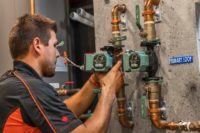
 In our continuing Industry Forecast series, we talk with John Hazen White, Jr. – Executive Chairman & Owner of Taco Comfort Solutions, on topics such as the short-term economy, supply chain issues, and lessons learned over the course of the pandemic. Here is our exclusive Q & A with John Hazen White, Jr.:
In our continuing Industry Forecast series, we talk with John Hazen White, Jr. – Executive Chairman & Owner of Taco Comfort Solutions, on topics such as the short-term economy, supply chain issues, and lessons learned over the course of the pandemic. Here is our exclusive Q & A with John Hazen White, Jr.:
MH: We’ve all experienced supply chain shortages, whether it’s industry related or things such as computer chips, plastics, bacon, etc., for example. Do you project a turnaround soon or within the next 6-12 months for certain materials that relate to your specific company?
JHW: Due to the China’s current COVID lockdowns and further supply chain disruptions caused by the war in Ukraine, we believe that chain issues are going to get worse over the next several months. Much of the processing of base raw materials and secondary materials has been shut down, further straining the supply chain. Exacerbating these issues, the skyrocketing costs of fuel and transportation are going to make the delivery of goods more costly.
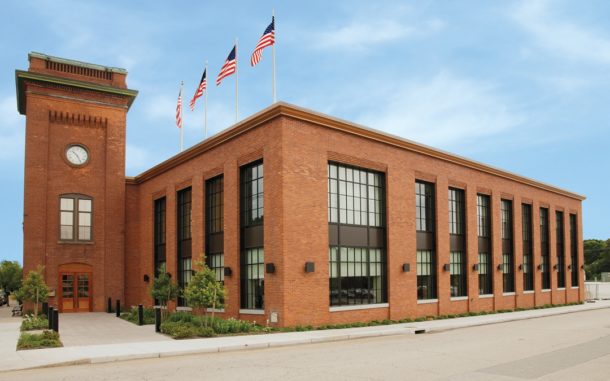
MH: We are in the midst of some of the highest inflation rates since the early ‘80s. Do you think that higher inflation becomes a “newer normal”? Explain.
JHW: Eventually costs will temper demand and inflation will slow. Unfortunately, this will be accompanied by an economic downturn. The risk is that governments may try to artificially stimulate the economy, which could potentially prolong the inflationary upturn.
MH: In general, how do you see the economy short-term? Give a few examples of how you draw that conclusion (housing starts, commercial construction, etc.).
JHW: The short-term economy appears to be healthy. Orders remain strong and backlogs are at all-time highs. Data such as housing starts point to continued growth in 2022, with low inventory levels and a tight rental market driving that growth. In addition, manufacturing construction is on the rise to meet capacity demands.
MH: Where are you seeing signs of positivity, if any?
JHW: Short-term, the economy appears to still be growing, but at a slower pace. Although the last two years have been very challenging, these challenges can also serve as a catalyst for improvement. Companies are reinventing their structures and processes to adapt to a much faster business pace. We’re seeing step changes in productivity, efficiency, and innovation to keep up with today’s challenges and changing business environment.
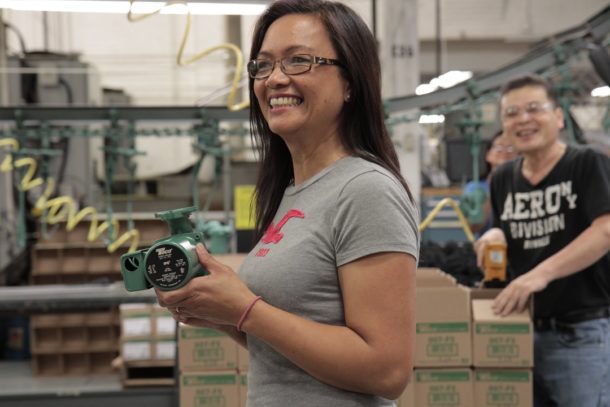
MH: How do you as manufacturers work with customers who are dealing with longer lead times and/or higher prices? Is it a matter of open lines of communication?
JHW: Constant communication and strong partnerships are great ways to manage through the current supply chain and production issues. Most customers understand the challenges that all manufacturers are currently dealing with – they just want to be kept informed to minimize surprises and plan their projects accordingly.
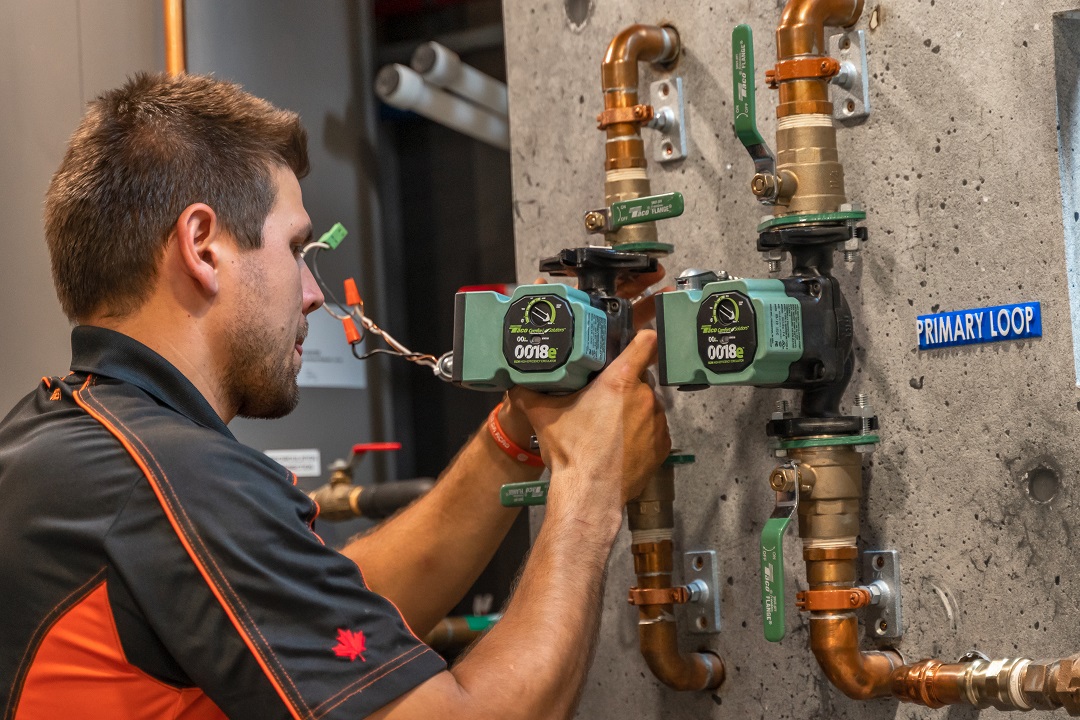
MH: It seems that in today’s employment landscape, it’s hard to find good labor, whether it’s truck drivers, waiters at restaurants, etc. In our industry, how do we continue the fight to highlight the trades as a great career choice?
JHW: Social media is a great way to reach future tradesman of our industry. We have been running a social media campaign called #TradePower, which highlights successful contractors in the industry and the pride they take in their craftsmanship and service. Above all else, Taco has benefited by continuing to do what we always do – treat people right.
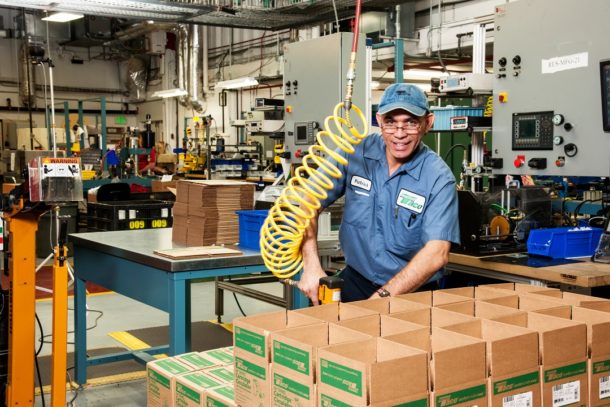 MH: In spite of COVID, people must move on. How has your company evolved—or continued to march forward—over the past two years, and talk about any new initiatives, expansions, etc.
MH: In spite of COVID, people must move on. How has your company evolved—or continued to march forward—over the past two years, and talk about any new initiatives, expansions, etc.
JHW: The sudden disruption of COVID restrictions in 2020 forced a much faster adoption of planned technology upgrades. A planned rollout of organizational digitization was condensed from 18 month to two weeks, which gave us the ability to continue functioning and growing in the new work-from-home reality. One of the biggest positives we saw during the pandemic was the rise of global collaboration. The quick adoption of virtual meetings boosted our collaboration with our entire global workforce, ensuring the best players were part of any team meeting. This has led to an increased sharing of ideas on everything from safety protocols to operational improvements. More than ever, we are thinking globally to optimize our resources and maximize our growth.

The importance of inventorying the right tools + supplies Last year, Keefer Rader, owner of Albuquerque-based Outlaw Mechanical, a shop that specializes in light commercial work, including kitchens, had one of those experiences that confirmed the value of an investment he’d made just weeks earlier. Well, he didn’t buy cryptocurrency or Spotify stock at just Read more
The importance of inventorying the right tools + supplies
Last year, Keefer Rader, owner of Albuquerque-based Outlaw Mechanical, a shop that specializes in light commercial work, including kitchens, had one of those experiences that confirmed the value of an investment he’d made just weeks earlier.
Well, he didn’t buy cryptocurrency or Spotify stock at just the right time if that’s where your imagination was going with it.
The event that triggered confirmation of a diagnostic tool’s purchase was a visit to a popular wedding venue in Colorado, a full day’s drive (or night, in this caser) from his shop.
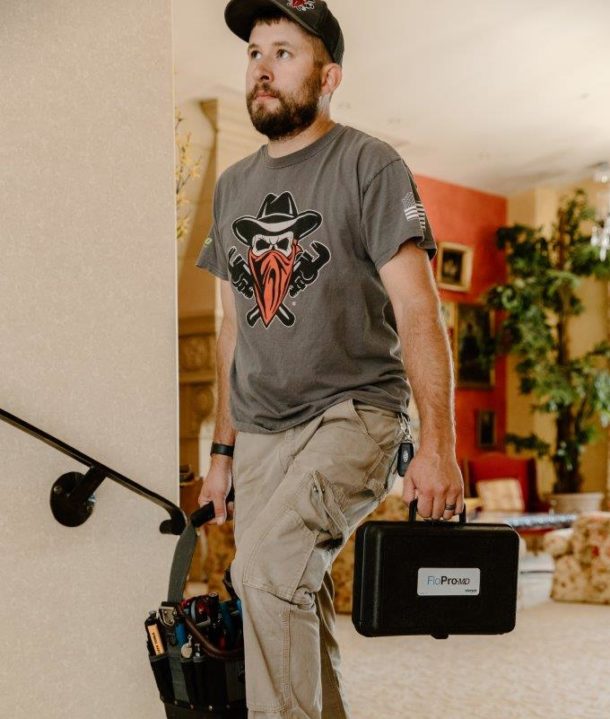
Keefer Rader, owner of Outlaw Mechanical.
350 miles from home base
Several years before he founded Outlaw Mechanical at the age of 21, Rader worked in remote Colorado, maintaining the property and mechanical systems on a private ranch – a destination that’s won recognition as a luxurious wedding/events venue. Though his firm – now 15 years old – has won recognition as the “Number Two-rated” mechanical firm in Albuquerque, he’s maintained ties in Colorado.
“My family and I love the area, and there are still folks in Colorado who insist that I serve as their mechanical systems pro – even at a distance of 350 miles,” he said. So it wasn’t a complete surprise to hear from a man who manages a mountaintop wedding venue outside of Durango, CO – just several days before a large gathering was to lease the facility for a ceremony.
Apparently, a large kitchen broiler – “absolutely needed by the caterer,” he said – wasn’t performing well. The new manager was instructed to get Rader out to fix it.
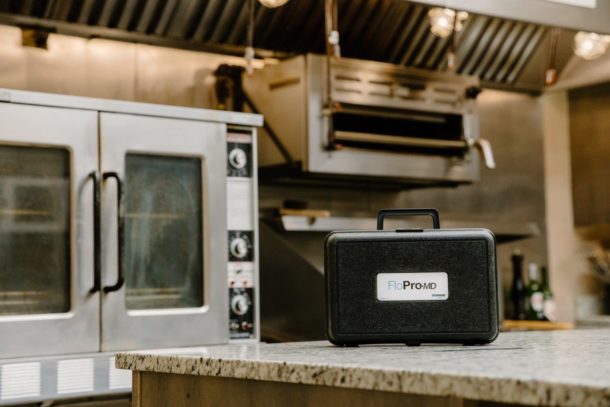
The Watts/Dormont Flo0Pro-MD is protected by its own hard case, and is easily portable.
“I tried to help him diagnose and trouble-shoot the problem, but I quickly learned that they’d already attempted to solve the problem [to no avail],” said Rader. “So, with less than a week before the large group arrived for the wedding – and with plenty of work to do in Albuquerque – Rader swept his schedule to allow time for a Friday night drive to Durango, hoping to have the problem solved for a drive home the next day.
“The challenge with remote site work is the need to pre-think everything,” he added. “Would I have the right materials and supplies and spare parts with me, and anything else I might need to complete the job in one trip?”
By Friday afternoon, Rader visited a local supplier, buying some spare parts for the large, commercial kitchen broiler. He ran between the truck and his shop’s well-stocked shelves a dozen times before his departure and was soon on his way, driving most of the distance that evening.
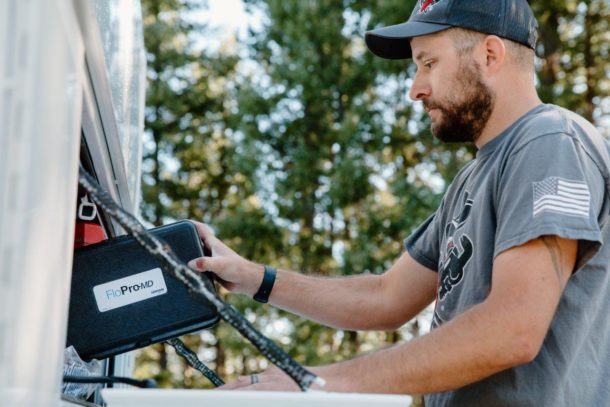
Keefer Rader, owner of Outlaw Mechanical, retrieves the FloPro-MD from his truck.
The next day, Keefer drove the last 20 miles to the wedding venue. “Just after sunrise, the site was open just as the manager promised,” said Keefer. He quickly found the griddle and set to work.
“I found that the broiler worked, but not well enough. It needed more [LP] gas for more heat,” he explained. Rader was unable to use a conventional manometer as the broiler didn’t have the test ports that he typically used for diagnosing hydronic boiler problems.
He went to the truck for the FloPro-MD diagnostic tool. “It’s now one of my go-to tools for gas appliance work,” he said. “The FloPro showed that the pre-regulator gas flow and pressure were good, but on the regulator’s other [outgoing/supply] side, I began to see my problem.”
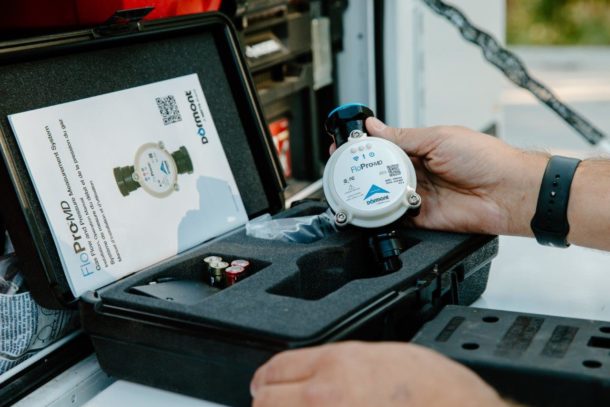
The Watts/Dormont FloPro-MD is a portable 3-in-1 gas flow meter, digital manometer, and calculator that helps service technicians and installers perform equipment start-ups, commissioning, and quickly diagnose gas flow or gas pressure issues with gas-burning appliances.
Among the supplies Rader learned long ago to keep in his truck: several gas regulators. “The FloPro made it perfectly clear that the broiler’s regulator had failed. Once connected, the new regulator provided greater gas pressure to the broiler which worked as intended, with plenty of heat for the caterer set to arrive that afternoon.”
Rader explained that, as the tool is connected to the gas line, and is out of the way, he especially likes the [FloPro-MD’s] ability to diagnose problems while the appliance is operating. “Managers at most commercial kitchens refuse to allow trouble-shooting or maintenance work during hours of operation because of the need to shut the appliance down – or, even worse – to cut gas service at a manifold to several gas appliances. Not with this tool – it’s designed to work while the appliance is in use.”
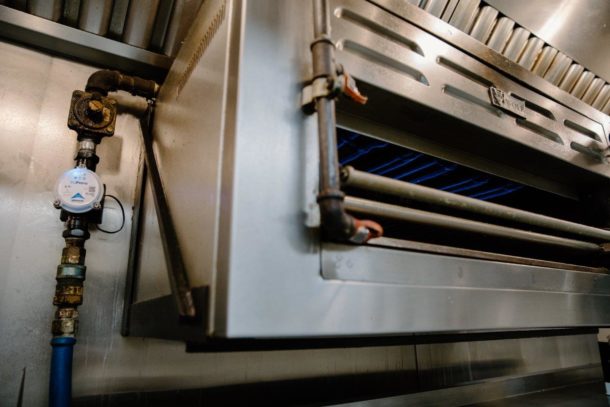
The FloPro-MD performs its diagnostic tasks, and provides useful data, while in-line (as gas courses through it). Here’s the device, in place, while flames heat the griddle following Keefer’s successful fix.
“The FloPro does the work of a variety of other tools,” added Rader. “It offers the function and intelligence of a manometer, and a gas flow meter, too. It offers precise diagnostics, with plain English on the screen. My hat’s off to the [tool’s] designer. The FloPro now has a permanent place in my truck.”
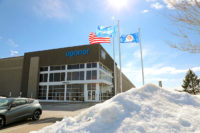
In our continuing Industry Forecast series, we talk with John Reutter, Interim President, Vice President, Finance, Uponor North America, on topics such as the short-term economy, supply chain issues, and lessons learned over the course of the pandemic. Here is our exclusive Q & A with MH: Do you project a turnaround soon or Read more
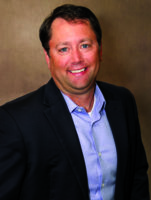
In our continuing Industry Forecast series, we talk with John Reutter, Interim President, Vice President, Finance, Uponor North America, on topics such as the short-term economy, supply chain issues, and lessons learned over the course of the pandemic. Here is our exclusive Q & A with
MH: Do you project a turnaround soon or within the next 6-12 months for certain materials that relate to your specific company?
Reutter: Signs are pointing towards some positive change with the supply chain, but there’s far too much unknown to say for certain that these constraints will improve in the next year. What we are focused on is securing secondary supply routes for our most important resources to help meet demand—and being a good partner for our customers by ensuring open and transparent communications.
MH: We are in the midst of some of the highest inflation rates since the early ‘80s. Do you think that higher inflation becomes a “newer normal”? Explain.
Reutter: No one ever wants to settle on higher inflation as a normal means of doing business. That said, I do believe we are near a peak inflationary environment with relief on its way. Unfortunately, Russia’s invasion of Ukraine will put a strain on the energy sector which will most likely cause the descent of inflation at a slower pace than we saw the ramp up. The best we can do is focus on what we can control and make sure our teams have the tools and resources they need to be successful move through the new year.
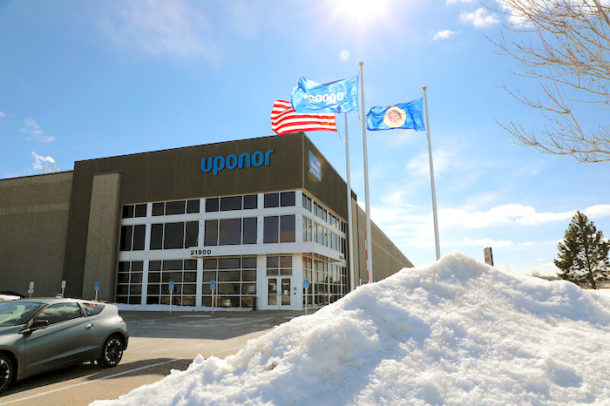
MH: In general, how do you see the economy short-term? Give a few examples of how you draw that conclusion.
Reutter: While there are certainly inflationary challenges, retail spending is up, and employment recovery continues along with wage growth. Couple that with declining COVID-19 cases and a general desire to move to an endemic environment, I believe we will see an uptick in the hospitality and travel sectors along with small business growth. These segments generally fuel short term economic recovery.
MH: Where are you seeing signs of positivity, if any?
Reutter: Residential and commercial demand for polymer piping is stronger than it has ever been. Contractors, builders, and designers continue to explore ways to integrate a complete polymer solution into their projects. We are working to deliver premium products that enrich the lives of our customers around the world, while conserving the scarce resources we are given.
MH: How do you as manufacturers work with customers who are dealing with longer lead times and/or higher prices? Is it a matter of open lines of communication?
Reutter: Everything starts with transparent communication. We are constantly maintaining open lines of communication with our customers through our factory sales team, rep agents, and distributors to ensure they have the most up-to-date information about Uponor. While we have had to make several price adjustments during the pandemic, it has been our open and transparent messaging that has maintained good standing with our customers.
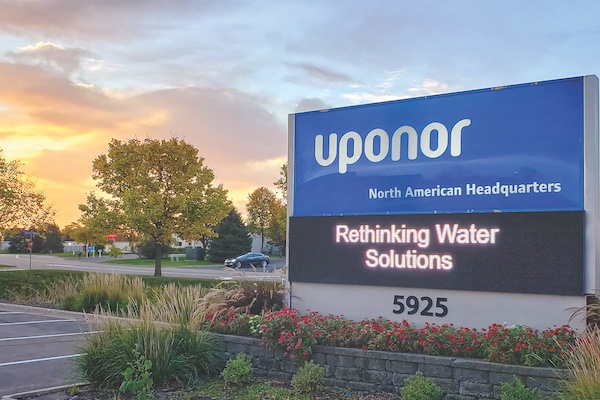
MH: It seems that in today’s employment landscape, it’s hard to find good labor, whether it’s truck drivers, waiters at restaurants, etc. In our industry, how do we continue the fight to highlight the trades as a great career choice?
Reutter: The need for skilled labor continues to grow. Increased wages and expanded career opportunities are a direct reflection of that demand. Uponor partners with several schools and universities to celebrate the opportunities available to students and workers looking to make a career change.
The fight to find talent starts with meeting the candidates on their terms – whether that’s through social media posts, job fairs, school visits, or community partnerships. We offer great wages, competitive benefits packages, and an award-winning culture that has been recognized as a top workplace for nearly a decade.
MH: In spite of COVID, people must move on. How has your company evolved—or continued to march forward—over the past two years, and talk about any new initiatives, expansions, etc.
Reutter: While our production team has been going strong throughout the pandemic, our office workforce has taken on the challenges in a productive, efficient way. We recently introduced our Flexible First program, a reimagined take on the traditional office space. With three unique employee personas – Resident, Hybrid, and Remote – our employees can perform in an environment that works best for them. We’re in the process of redesigning our corporate offices and will hold Flexible First as our standard moving forward.
You can learn more about Flexible First by reading this release from earlier in the year.
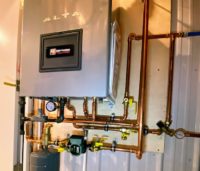
“Commercial Condos” are gaining popularity nationwide for small businesses in the service industry. These spaces, typically found in large post-frame buildings, offer a workshop atmosphere perfect for a company with a small fleet of vehicles that’s in need of garage bays, storage space and an office. Property developers and managers have seen increased demand for Read more
“Commercial Condos” are gaining popularity nationwide for small businesses in the service industry. These spaces, typically found in large post-frame buildings, offer a workshop atmosphere perfect for a company with a small fleet of vehicles that’s in need of garage bays, storage space and an office.
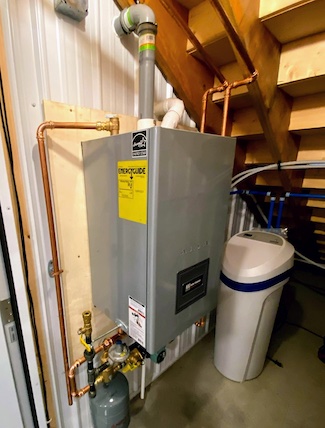
Aune installed the combi boiler in a closet below the staircase, protecting the mechanical equipment from activity within the shop.
Property developers and managers have seen increased demand for medium-sized commercial space, and that constructing a large, simple building and dividing it into several smaller spaces has presented a new development option for bare commercial property when a town is already saturated with storage units. For professionals in a variety of trades, the buildings offer everything they need and nothing they don’t, and the spaces can often be rented, leased or purchased outright.
Late last year, Aune Plumbing & Heating was hired to install a hydronic heating system and a plumbing system at a commercial condo in Monticello, Minn. A refrigeration contractor bought the building as a well-insulated shell and required further build-out.
“This was a very simple project,” said Eric Aune, owner of Aune Plumbing & Heating, in Elk River, Minn., and co-owner of Mechanical-Hub.com. “It started like any other hydronic job, with a heat load calculation.”
The spray foam insulation, insulated slab and two walls that are shared with other conditioned spaces kept the heat load low, relative to the condo’s 4,000 square feet and 20-foot ceilings. There’s only one restroom and no full-time occupants.
Combi Is Key
Because the single shower, utility sinks and heated indoor hose bib are used only occasionally, it would have been a waste of space to install a tank-style water heater, especially considering that all mechanical components had to fit under a stairway.
“We suggested the use of a combi boiler,” said Aune. “A tank wasn’t necessary, and there simply wasn’t space for it in the mechanical room, meaning it would have been outside in the garage bays and susceptible to damage.”
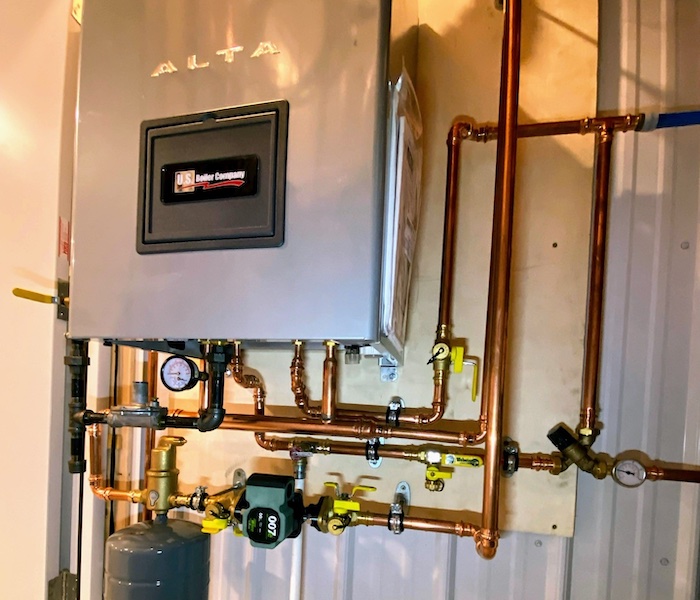
The 136 MBH Alta Combi is used to produce DHW for one full bathroom, a utility sink and a heated indoor hose bib, in addition to heating the space.
The system Aune designed includes a single zone of Smith low-temp baseboard radiation paired with a 136 MBH Alta condensing combi boiler made by U.S. Boiler Company, the industry’s first and only 10:1 gas-adaptive combi boiler.
“The 50 feet of baseboard receives a maximum water temperature of 130°F on a design day with an outdoor temperature of -15°F,” said Aune. “When possible, I like to use low-temp baseboard with high-efficiency boilers because it keeps the boiler in condensing mode for as long as possible, similar to in-floor radiant, though not quite to that degree.”
Tight Fit
All mechanical components are contained in a closet under the staircase leading to a storage loft. Even using a small, wall-hung boiler, Aune was cramped during the single-day boiler installation. The system includes a Taco 007e pump for the system and a Caleffi AngleMix thermostatic mixing valve on the domestic hot water side.
“The Alta fit nicely on one wall, but what really helped was the FastPipe premanufactured primary/secondary piping kit that U.S. Boiler Company includes with the boiler,” said Aune. “That reduced the amount of time I spent crammed in the closed. It all installed very quickly.”
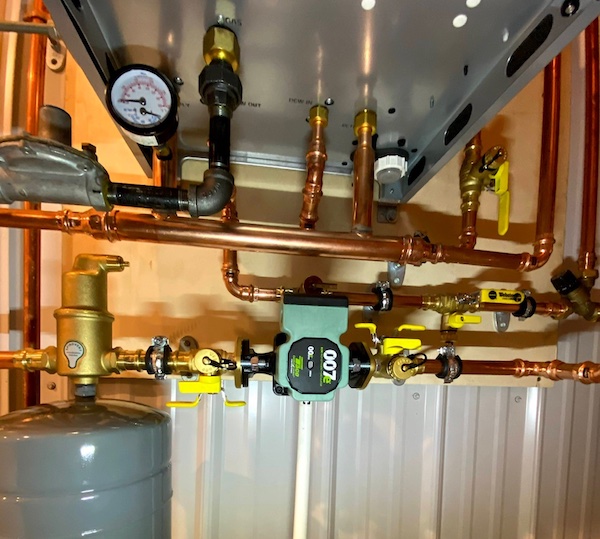
Aune found that the FastPipe premanufactured primary/secondary piping kit installs very quickly and easily.
The high efficiency Alta line includes 136 and 200 MBH combi models, as well as heat-only boiler models of 120, 150 and 180 MBH capacities. Its best-in-class gas adaptive technology provides simplicity and rapid installation and optimal efficiency in all variety of outdoor conditions. This technology also provides “no touch” adaptive combustion setup, with no manual throttle or offset adjustments.
The boiler self-calibrates in response to component wear, variation in fuel, environment and vent air pressure. No additional parts are required to convert from natural gas to propane.
Shockingly Simple
“I had never installed an Alta Combi before, so a few things came as a surprise,” said Aune. “I’m very accustomed to installing an outdoor reset sensor, and this boiler doesn’t have one. Instead, the Alta features sensor-less reset, and the boiler modulates water temperature perfectly. I think the unit is running more often than not, which is exactly what a condensing boiler is intended to do. It just runs almost continuously on low-fire.”
The Alta’s sensor-less reset monitors home heat load rather than outdoor air temperature. It assesses home heat input (firing rate) patterns. Monitoring heat load allows boiler water temperature setpoint to be responsive to everything impacting home heat loss, including outdoor air temperature, wind, rain, clouds, home occupancy, and activities like cooking and showering. Once home heat loss is known, the boiler water temperature can be set in very much the same way that outdoor air reset adjusts setpoint.
“The touchless works perfectly, but after installing condensing boilers for years, it definitely felt odd firing this boiler and walking away,” said Aune. “I didn’t have to input any information, and the unit just works as intended. It’s that simple and straightforward.”
Maintaining Temperature
The customer maintains the building at 68°F, and every time Aune has checked, the farthest from setpoint he’s ever seen the temperature is half a degree.
“We also found that the Alta produces domestic hot water very quickly,” said Aune. “There’s never been a complaint about the speed of hot water delivery or hot water volume. I think the owner would literally have to run the shower, the hose bib, and all sinks simultaneously to see the water temperature begin to drop off.”
The boiler has only been running for a month, and an unseasonably warm month at that, but based on how much time the unit spends on low-fire, Aune is confident the owner isn’t going to have any issues with his gas bill.
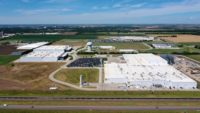
In our continuing Industry Forecast series, we talk with Peter Orler, Strategy Director, Viega, on topics such as the short-term economy, supply chain issues, and lessons learned over the course of the pandemic. Here is our exclusive Q & A with Viega. MH: We’ve all experienced supply chain shortages recently in one form or another Read more
In our continuing Industry Forecast series, we talk with Peter Orler, Strategy Director, Viega, on topics such as the short-term economy, supply chain issues, and lessons learned over the course of the pandemic. Here is our exclusive Q & A with Viega.
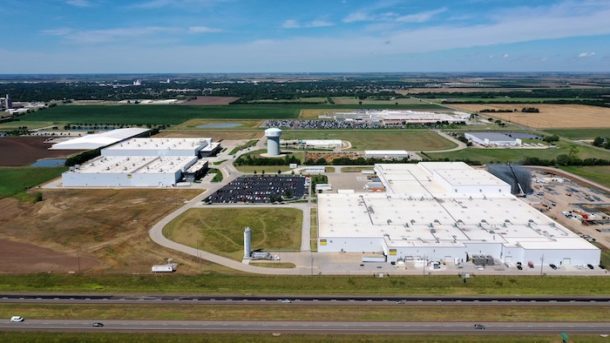
Viega Assembly, Warehousing and Distribution—McPherson, Kan.
MH: We’ve all experienced supply chain shortages recently in one form or another. Do you project a turnaround soon or within the next 6-12 months for certain materials that relate to your specific company?
Orler: We’ve started to see some recovery in raw material availability early in 2022, but we expect to see shortages continue to pop up over the medium term. Labor availability is a huge driver of this—even where raw materials are available, it’s difficult to staff a complete workforce to fill production lines. The situation has really forced us and other manufacturers to adapt and become more flexible with our operations.
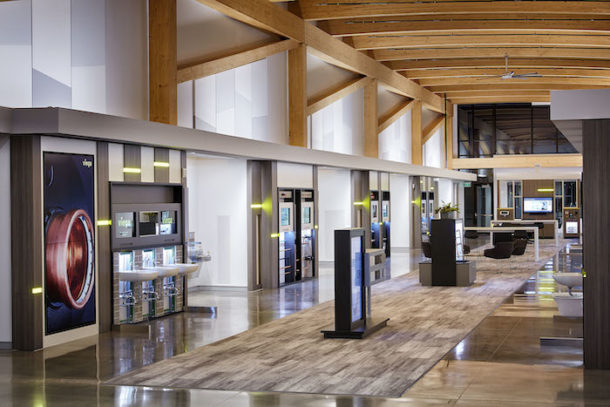
Viega Training Center, Broomfield, Colo.
MH: We are in the midst of some of the highest inflation rates since the early ’80s. Do you think that higher inflation becomes a “newer normal”? Explain.
Orler: Inflation may settle at higher rates than we’ve seen over the past two decades or so, but we don’t believe the current level of inflation represents a semi-permanent new normal. The economic situation over the past two years has been out of the ordinary for a number of reasons (e.g., COVID, supply chain disruptions, labor policies). In the past (e.g., late 70s) when we saw inflation reach these rates in the US, it has been for a period of 2-3 years before settling at a lower level. Monetary policy levers could bring it down faster as the Fed has signaled that quantitative easing will be phased out and interest rate increases are likely on the way.
MH: In general, how do you see the economy short-term? Give a few examples of how you draw that conclusion?
Orler: We focus mostly on commercial, multifamily, and institutional construction starts as our markets. 2021 saw a remarkable year-over-year increase (18% per Dodge) that brought us back to near 2019 levels. We’re seeing things even out to near normal (4% to 10% year-over-year increase in 2022 starts forecasted, depending on segment). Given our focus on pipes, valves, and fittings at Viega, we’re also paying particular attention to the impact of public investment funding on water infrastructure.
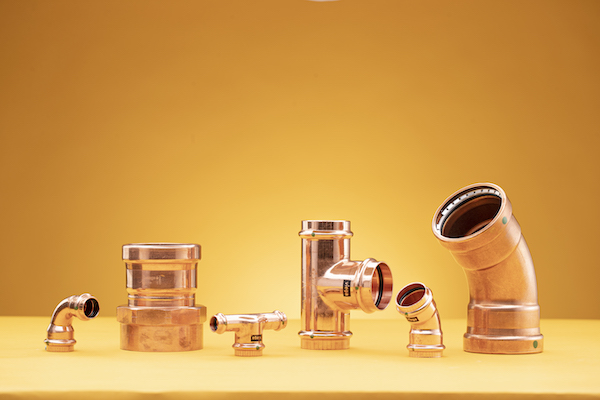
ProPress family
MH: Where are you seeing signs of positivity, if any?
Orler: We continue to see strong construction project volume, particularly focused in mid-size metropolitan areas. A few sectors stand out – healthcare starts have been impressive, warehousing and logistics facilities continue to grow as e-commerce demand remains high, and retail and office continue to work their way back from lows during the early part of the pandemic.
MH: How do you as manufacturers work with customers who are dealing with longer lead times and/or higher prices? Is it a matter of open lines of communication?
Orler: We’ve been as transparent as possible with our customers. One thing that we’ve found through this is that our customers care a lot more about reliability than speed. It’s been critical that, once we set an anticipated date and quantity, we deliver on that promise. Our customers have been understanding on both longer lead times and price increases as long as we clearly explain the drivers behind why it’s happening and deliver to what we promise.
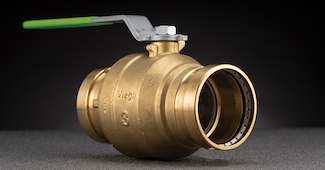 MH: It seems that in today’s employment landscape, it’s hard to find good labor, whether it’s truck drivers, waiters at restaurants, etc. In our industry, how do we continue the fight to highlight the trades as a great career choice?
MH: It seems that in today’s employment landscape, it’s hard to find good labor, whether it’s truck drivers, waiters at restaurants, etc. In our industry, how do we continue the fight to highlight the trades as a great career choice?
Orler: It starts early—we need to ensure that students know that the trades are a strong option for their future. Our plumbers and mechanical contractors solve complex problems, deliver excellent customer service, and leave their mark on their communities. We partner closely with a network of trade schools to help promote the trades as a career and ensure these benefits are well known. We then work with plumbers and contractors throughout their careers—from apprentice to master—to meet their professional goals and become models to the next generation for what’s possible in the trades.
MH: In spite of COVID, people must move on. How has your company evolved—or continued to march forward—over the past two years, and talk about any new initiatives, expansions, etc.
Orler: COVID has helped us rethink how we engage our customers. A prime example of this is how we train customers to use our products – early in the pandemic, we designed the concept for ViegaWorks sessions which are remote engagements led by one of our very talented technical consultants. This started as a way to be there for our customers even when we couldn’t be on-site, but it has evolved into a tool that we’ll continue to use to deliver remote support even as we engage with more customers in-person.
We’ve also evolved our approach to customer outreach. In the past, we were able to rely on our boots-on-the-ground to reach every job site and contractor in their area. As job sites closed off and engagement moved remote, we found that marketing and inside sales could be a valuable approach to make sure we’re reaching every customer that would benefit from Viega press technology even with job sites closed to us. We’ve ramped up our promotions, including working with RIDGID and Milwaukee to offer press tools to contractors to introduce them to pressing.
As we’ve started coming back to in-person engagements, we’ve really tried to maximize our touchpoints with our customers. We were excited to see everyone at AHR and took the occasion to launch our new Viega valve lines live and in-person.
